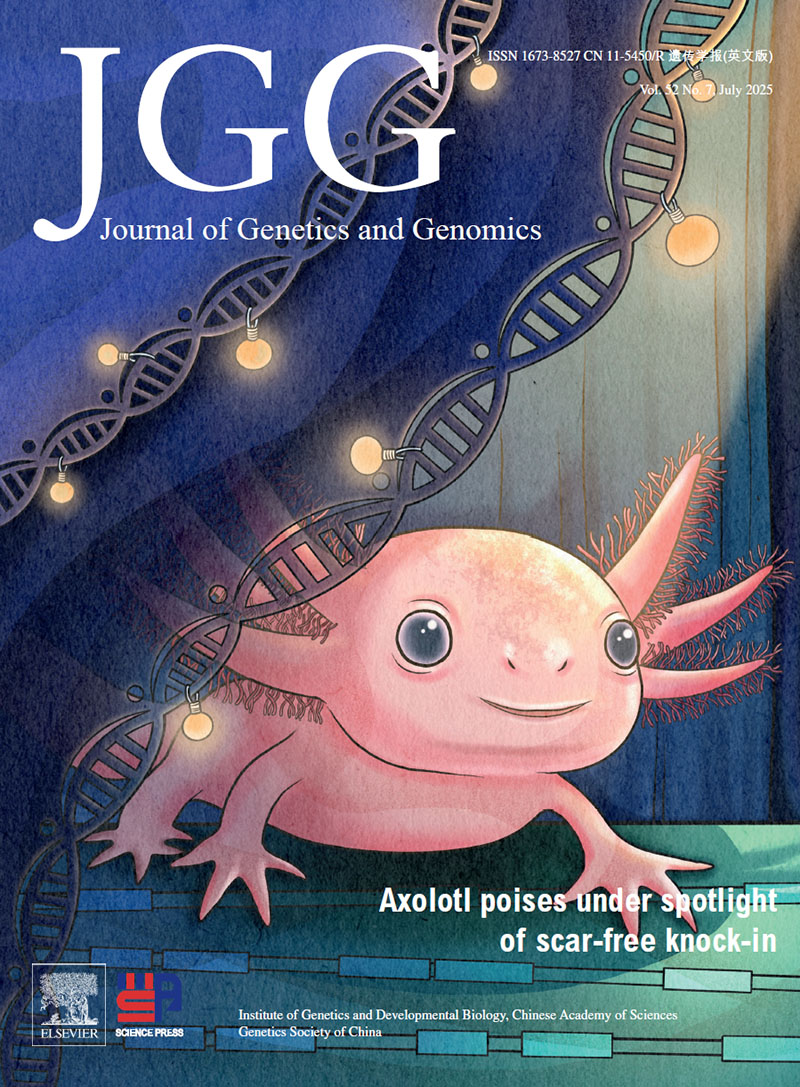2024, 51(6): 630-641.
doi: 10.1016/j.jgg.2024.01.003
Abstract:
Clathrin-mediated endocytosis has been implicated in various physiological processes, including nutrient uptake, signal transduction, synaptic vesicle recycling, maintenance of cell polarity, and antigen presentation. Despite prior knowledge of its importance as a key regulator in promoting clathrin-mediated endocytosis, the physiological function of α- and γ-adaptin binding protein (aagab) remains elusive. In this study, we investigate the biological function of aagab during zebrafish development. We establish a loss-of-function mutant of aagab in zebrafish, revealing impaired swimming and early larval mortality. Given the high expression level of aagab in the brain, we probe into its physiological role in the nervous system. aagab mutants display subdued calcium responses and local field potential in the optic tectal neurons, aligning with reduced neurotransmitter release (e.g., norepinephrine) in the tectal neuropil of aagab mutants. Overexpressing aagab mRNA or nervous stimulant treatment in mutants restores neurotransmitter release, calcium responses, swimming ability, and survival. Furthermore, our observations show delayed release of FM 1–43 in AAGAB knockdown differentiated neuroblastoma cells, pointing towards a probable link to defective clathrin-mediated synaptic vesicle recycling. In conclusion, our study underscores the significance of Aagab in neurobiology and suggests its potential impacts on neurological disorders.







